A cold start to the morning did not deter this month’s intrepid ramblers, if anything it may have contributed to the enthusiasm of the group, after all we were on a mission to look for useful plant characteristics that help in our plant identification.
The hand lenses were put to good use throughout the ramble, the flower of Propeller Plant, Spyridium vexilliferum var. vexilliferum was the first to come under investigation. When you look closely, you will notice a small flower surrounded by 3 white leaves often thought to be petals. These leaves are known as bracts.

Propeller Plant
The understorey of this particular Heathy Woodland is dominated by Sandhill Sword-sedge, Lepidosperma sieberi. This can be recognised by the fan shaped growth habit as the leaves grow from the base, we also found the flowering stems (culms) are generally taller than the leaves. By carefully running your hand along the edge of the culm, you will feel its rough edge.

Sandhill Sword-sedge
Both species of Sheoak growing in this area were examined closely. Using a hand lens or a phone magnifier app, we were able to count the number of very small ‘teeth’ or leaves found on the stems.
The Drooping Sheoak, Allocasuarina verticillata has between 9-10 leaves and the Small Sheoak, Allocasuarina misera has between 5-7 leaves.
The size and shape of female cones also provide a useful identification tool, beware the imposter, a cone look-alike that has been formed through the feeding action of an insect and its need for a home, in this case within a Sheoak stem.

Drooping Sheoak Galls
As is the case with Drooping Sheoak, Prickly Broom-heath, Monotoca scoparia has both male and female plants. Identification of the sex of the flowers was not the easiest task of the morning, one thing is for sure, a magnification device and source of mature flowers is recommended.
The male flower has clearly visible stamens, often dark on maturity. The female flower is smaller than the male.
The small oblong leaves with a sharp point at the leaf tip and a pale lower surface provide year-long identification characteristics.
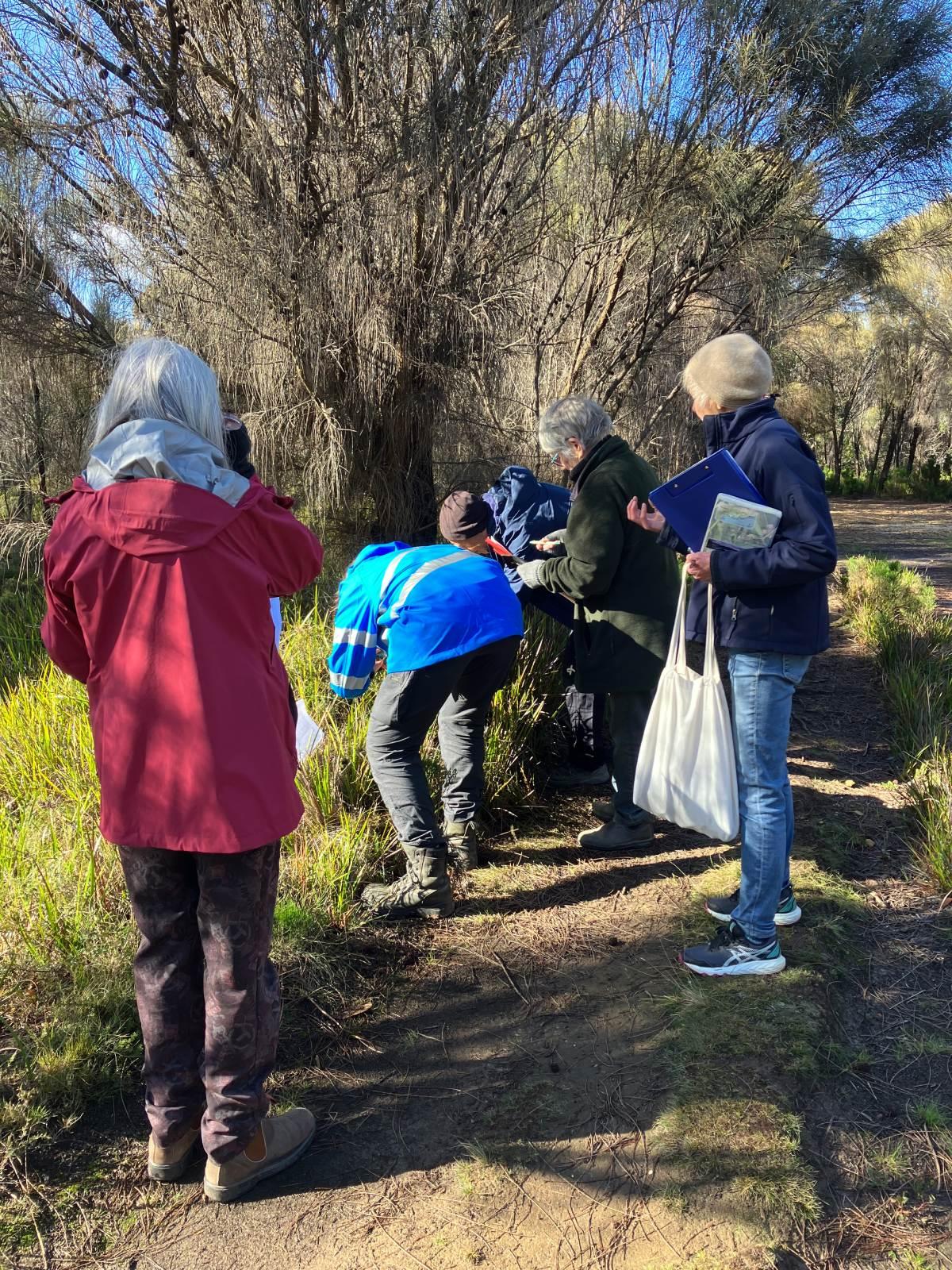
Interest in Prickly Broom-heath
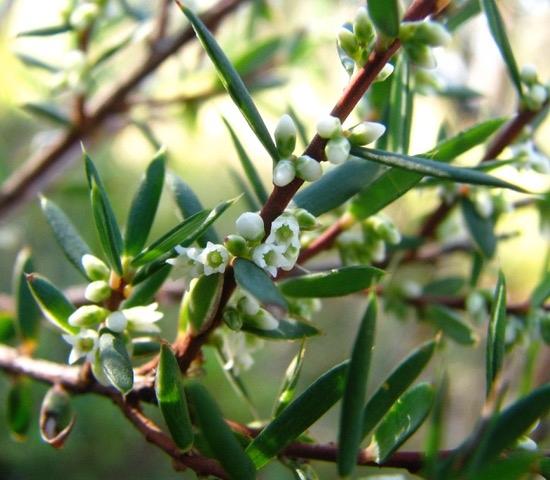
Female Prickly Broom-heath

Male Prickly Broom-heath
The Correa species visible from the walking track appear to be Eastern Correa, Correa reflexa var. speciosa, this has yet to be confirmed by the herbarium.
This species has flowers, whose associated leaves are held at right angles to the flower rather than in a clasping position commonly observed on the Common Correa, Correa reflexa var. reflexa. We noticed the Eastern Correa flowers were held in an erect position or as pendants.
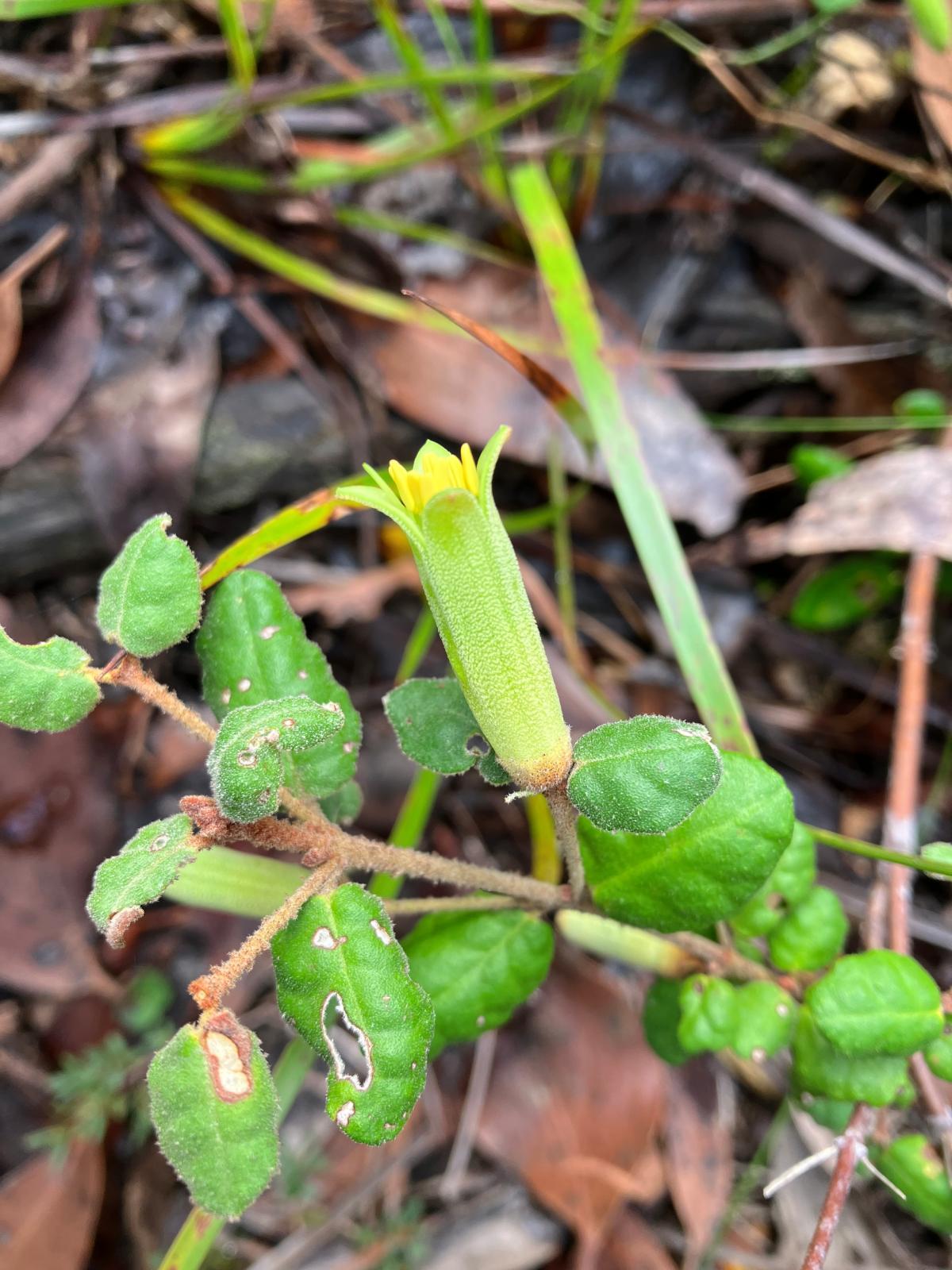
Eastern Correa Erect Flowers
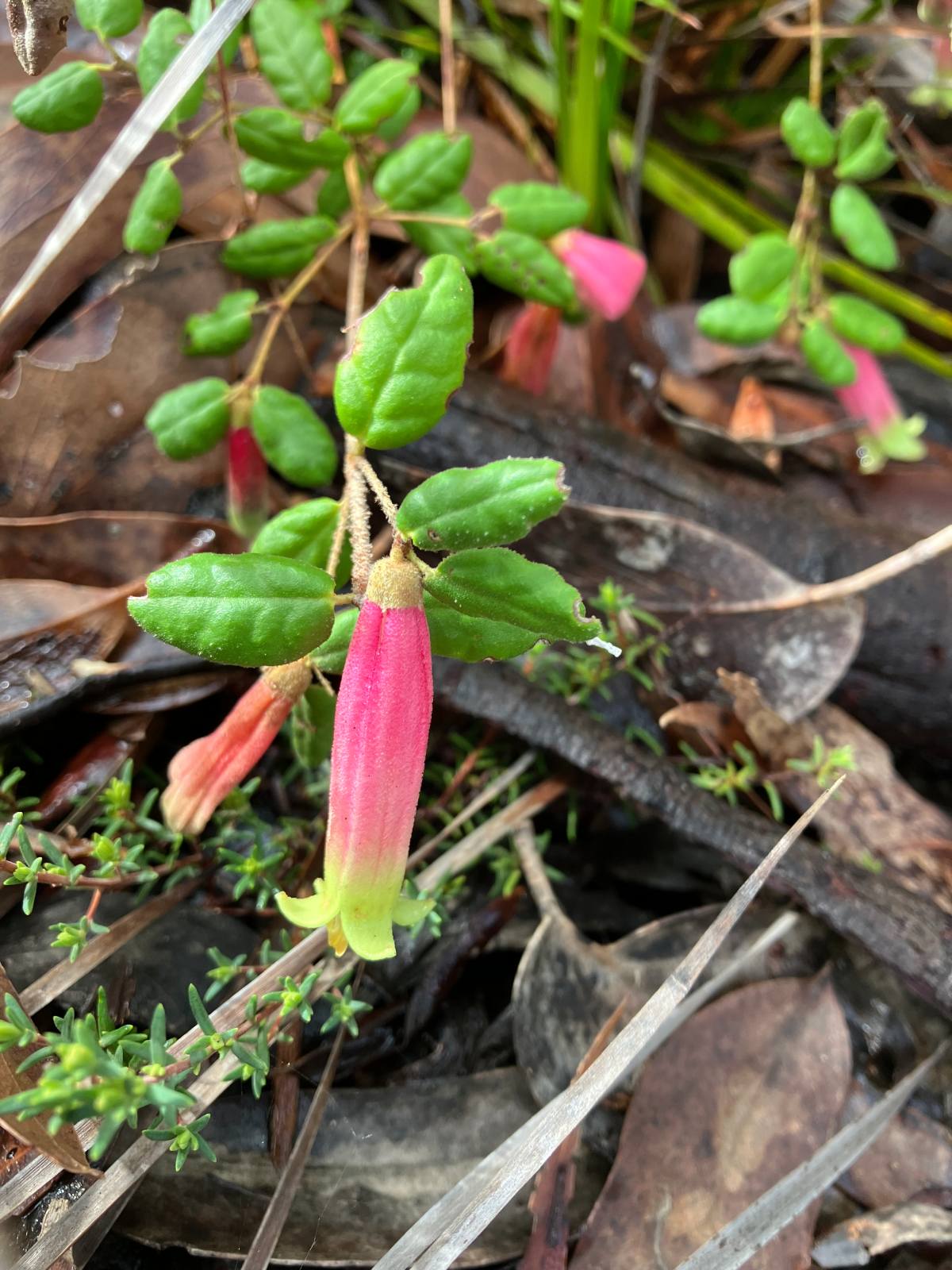
Eastern Correa Pendant Flowers
A ramble in this, the most easterly section of the Great Otway National Park would not be complete without talking about the many Austral Grass-trees, Xanthorrhoea australis growing in the area.
The presence of several recent flower stems posed the question “Is fire necessary for the flowering of Austral Grass-tees?” This section of the park has not experienced a fire since the Ash Wednesday fire of 1983.
Using the rule of thumb method (1cm p.a.) to calculate the growth rate of Grass-tree trunks, our measurement of roughly 45cm of unburnt trunk suggests a correlation between the area and the Ash Wednesday fires.
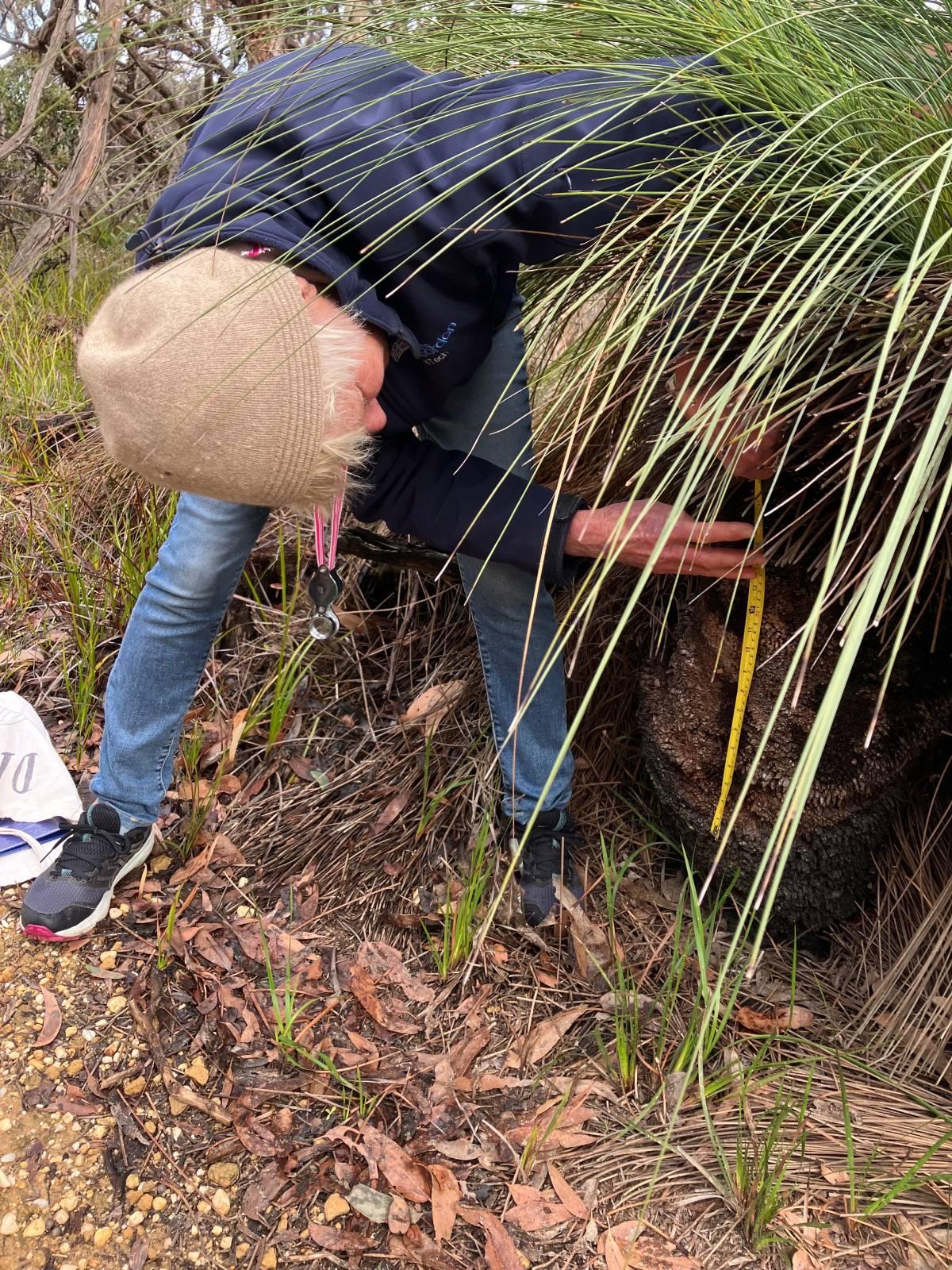
Austral Grass-tree measurement
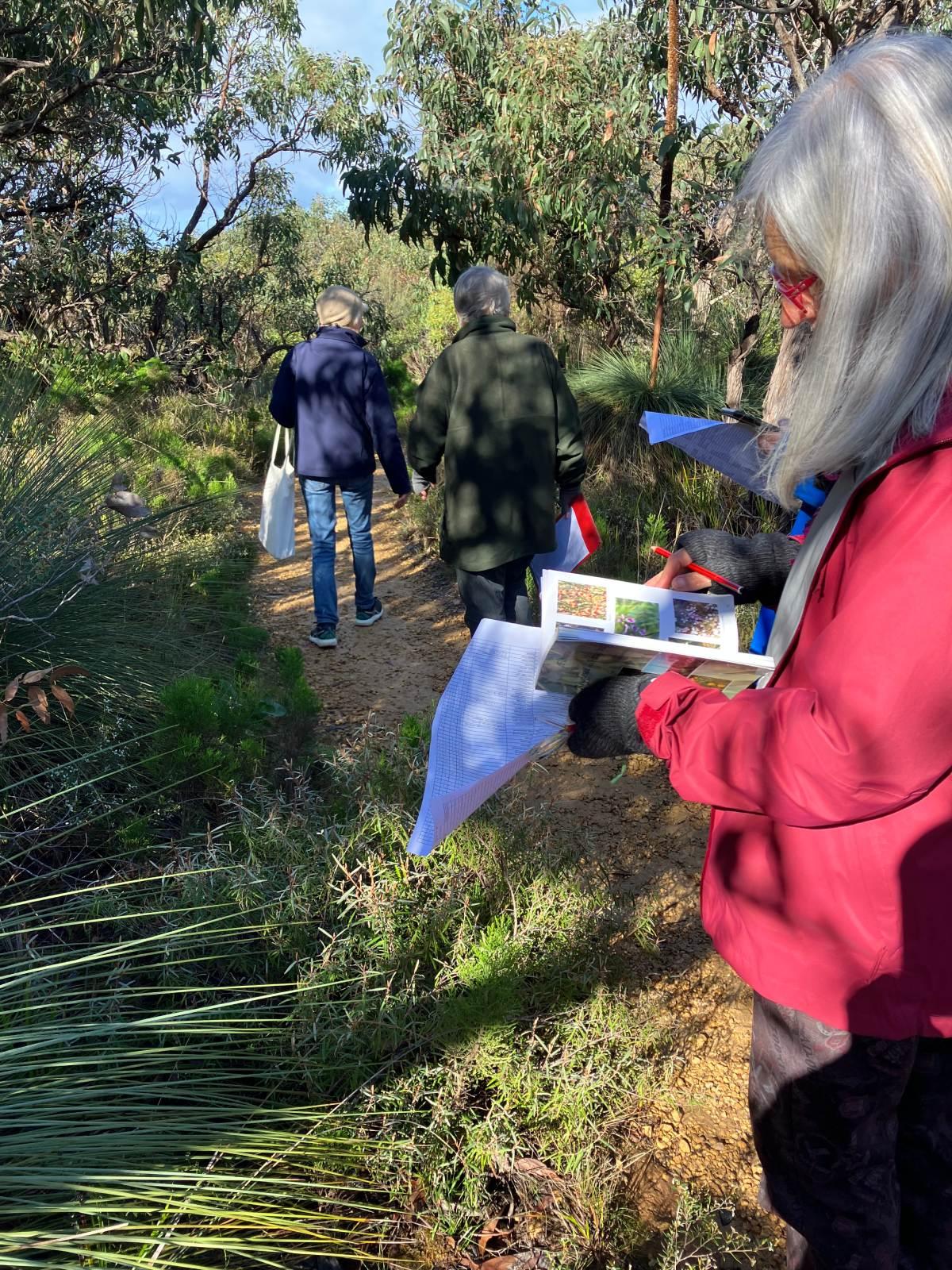
Rambling along the track
Gail Slykhuis May 23
Images Ellinor Campbell